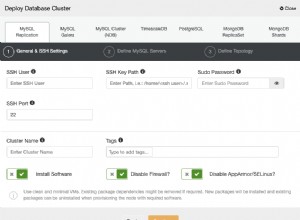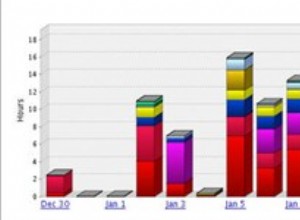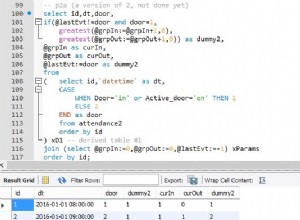La respuesta corta es no, no hay nada fácil manera de hacer esto. Sin embargo, he encontrado una solución que funciona. Básicamente necesitas implementar un dialecto personalizado. Aquí hay una implementación (tenga en cuenta la fuente original de la implementación en los comentarios).
package com.my.custom;
import java.util.Properties;
import org.hibernate.dialect.Dialect;
import org.hibernate.dialect.PostgreSQLDialect;
import org.hibernate.id.PersistentIdentifierGenerator;
import org.hibernate.id.SequenceGenerator;
import org.hibernate.type.Type;
/**
* Creates a sequence per table instead of the default behavior of one sequence.
*
* From <a href='http://www.hibernate.org/296.html'>http://www.hibernate.org/296.html</a>
* @author Burt
*/
public class TableNameSequencePostgresDialect extends PostgreSQLDialect {
/**
* Get the native identifier generator class.
* @return TableNameSequenceGenerator.
*/
@Override
public Class<?> getNativeIdentifierGeneratorClass() {
return TableNameSequenceGenerator.class;
}
/**
* Creates a sequence per table instead of the default behavior of one sequence.
*/
public static class TableNameSequenceGenerator
extends SequenceGenerator {
/**
* {@inheritDoc}
* If the parameters do not contain a {@link SequenceGenerator#SEQUENCE} name, we
* assign one based on the table name.
*/
@Override
public void configure(
final Type type,
final Properties params,
final Dialect dialect) {
if (params.getProperty(SEQUENCE) == null
|| params.getProperty(SEQUENCE).length() == 0) {
String tableName = params.getProperty(PersistentIdentifierGenerator.TABLE);
if (tableName != null) {
params.setProperty(SEQUENCE, "seq_" + tableName);
}
}
super.configure(type, params, dialect);
}
}
}
La implementación anterior debe almacenarse como TableNameSequencePostgresDialect.java en src/java/com/my/custom dentro de su proyecto Grails.
A continuación, actualice su DataSource.groovy para usar este nuevo dialecto personalizado.
dialect = com.my.custom.TableNameSequencePostgresDialect
Eso es todo. No es fácil pero se puede hacer.




